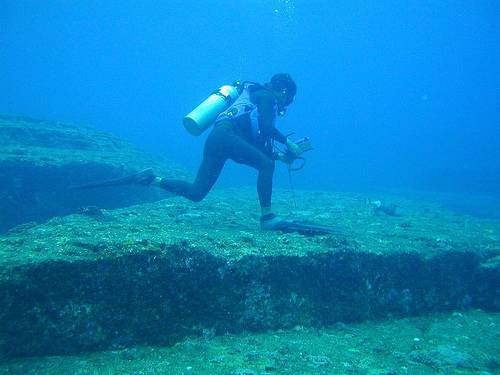
The supertanker Esso Languedoc was weathering a storm off Durban, South Africa, in 1980 when an enormous wave struck it from behind and washed over the deck. This photo was taken by first mate Philippe Lijour. That mast is 25 meters tall, which means the wave was the size of a four-story building.
So-called freak waves were once thought to be legendary, but now it appears that rogue waves even three times this size, 100 feet tall, can occur spontaneously in the middle of the ocean, sometimes in perfectly clear weather. No one’s sure why.



